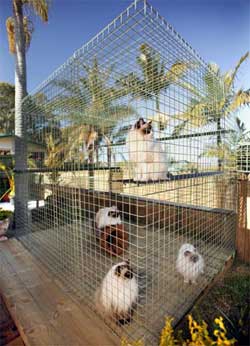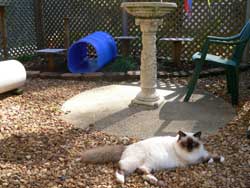



HELP SAVE OUR WILDLIFE, OUR ENVIRONMENT AND OUR CATS AS WELL!
We would like to call upon all cat lovers and owners to help save our wildlife and our environment.
In Australia in recent years, concern has been raised about the impact of cats, both domestic and feral,on native fauna populations. It has long been known that cats and dogs that are allowed to roam free place greater risk on the environment.
Concerns about the role of domestic cats in particular, has led many groups, more recently local government authorities, to consider cat management options.
There are approximately 4.8 million dogs and 3.9 million cats in Australia*, so it is not hard to imagine the damage that these animals could do to the environment if controls are not introduced and properly regulated.
*https://kb.rspca.org.au/knowledge-base/how-many-pets-are-there-in-australia/ (as at 30 April 2019)
With the focus on our depleting natural resources and native fauna populations, it is easy to see why environmentalists and the like, target the cat as a cause of some of the problem.
Basically, cats are nocturnal creatures - they are quite content to sleep away the day, but come nightfall, our friendly family feline transforms itself into a hunter.
Regardless of the fact that they may have already been fed, this does not curb the natural instinct to play the age old game of cat and mouse. It is not necessarily that the cat wants to kill and eat its prey but just the thrill of the chase is enough.

Cats often will prefer to just play with whatever it is that they are stalking, whether it be a garden lizard, a moth or a small bird. Mostly the animal in question will usually die of fright more than injuries inflicted by its feline playmate. it is not uncommon to see a cat with a dead insect or small mammal actually throw it into the air or bat it with their paw to continue the game long after the creature has died. When the cat realises that its playmate is no longer going to play, they walk away to find something else to do - rather than actually eat it as is the common theory. So although our lovable family cat may not want to harm or kill our native wildlife, often this is sadly the case.
The time of day when a cat will do the most damage is actually at night! The old practice of putting the cat out at night is no longer the responsible or even the acceptable thing to do!
The extent to which cats are reported to catch prey is considerably lower for those cats which are securely contained within the home at night than for those able to go outside at will or those who are put outside against their will!
About 40% of domestic cats thought by their owners to be inside at noght, had actually been outside and have ranged over a 1 hectare area. That's a large number of cats running around every night - imagine the damage that these felines could do to the environment, our fauna and themselves.
We urge all animal lovers and most especially cat lovers and owners to set a good example and keep your animals contained at night.
We need to become responsible pet owners - a successful pet meets the owner's needs and expectations and integrates into the family AND much more importantly the environment as well.
WAYS TO BECOME A RESPONSIBLE CAT OWNER

Desex your Cat at an early age. A desexed cat is less inclined to wander, fight or spray urine to mark its territorial boundaries.
Microchip your cat – As of 1 July 2009 cats must be microchipped prior to sale. Microchipping is performed by veterinarians, animal welfare organisations and some local councils. When your cat is microchipped, its details will be entered in a national database that can assist in re-uniting you with your cat if it is lost. Make sure you advise of any changes of address or ownership.
Keep your cat confined -
If possible, always keep your cat indoors or confined in a secure outdoor enclosure with access to food, water and shelter at all times. Cats kept indoors from kittenhood quickly become contented with this lifestyle and rarely try to ‘escape’ to the outdoors. Unconfined cats are a danger to wildlife and are also at risk of disease, parasites, cat fights, dog attacks, human cruelty, car accidents and snake bites. If you must let your cat out, ensure it is at least always securely confined between dusk and dawn. You can encourage your cat inside at dusk by only feeding it once it has come inside for the night. Some tips for a happily confined cat include:
- Keep your cat inside at all times from an early age so it does not learn to expect to be outside
- Provide a safe, sheltered outside enclosure for your cat
- Provide sufficient food and water
- Provide a clean litter box
- Provide places for your cat to scratch, eg a scratching post
- Play with your cat every day
- Give your cat toys to play with when you are away
- Provide Cat Grass to assist digestion (obtainable at any garden shop or nursery)
Provide Veterinary Care – Provide routine veterinary care, including vaccination, worming, claw trimming and annual check ups.
